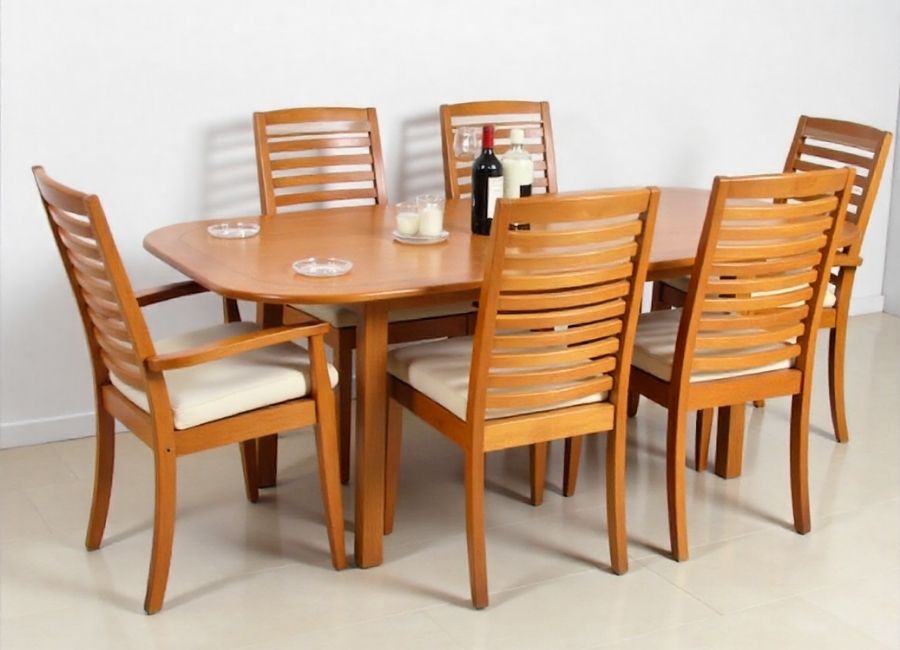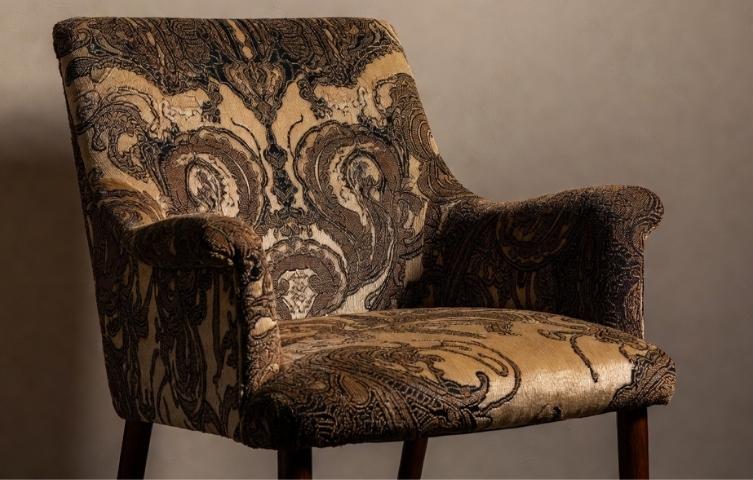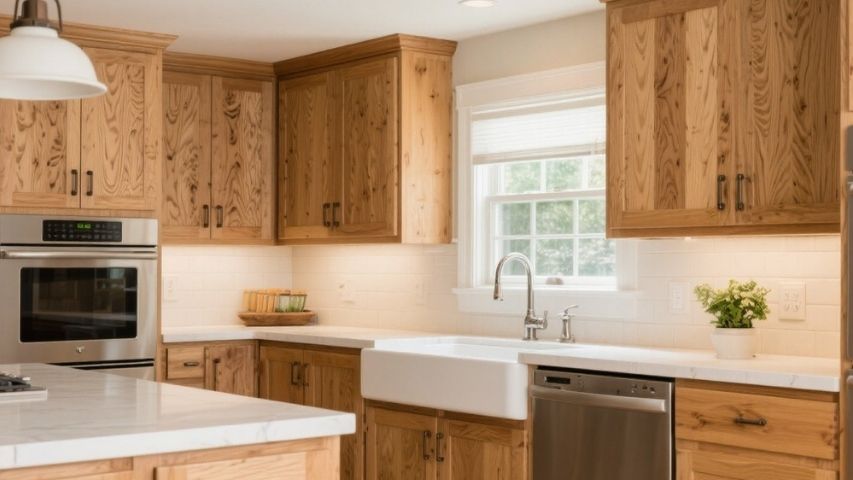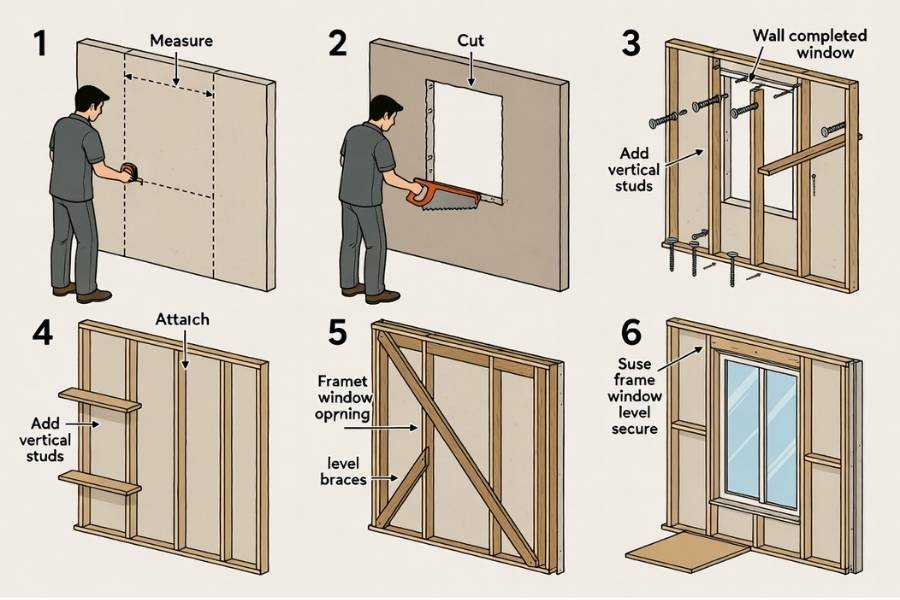Teak furniture represents one of the smartest investments you can make for your home or outdoor space. This naturally weather-resistant hardwood develops character over time; however, even the most durable teak pieces require occasional restoration to maintain their beauty and functionality.
Whether you inherited a vintage teak dining set or your outdoor furniture has weathered years of sun and rain, restoration can bring your pieces back to life. The process requires patience and the right approach, but the results are worth every minute of effort.
This guide walks you through each step of teak furniture restoration, from assessment to final finishing. You’ll learn when restoration is necessary, what tools are required, and how to avoid common mistakes that could damage your valuable pieces.
Assessing Your Teak Furniture’s Condition
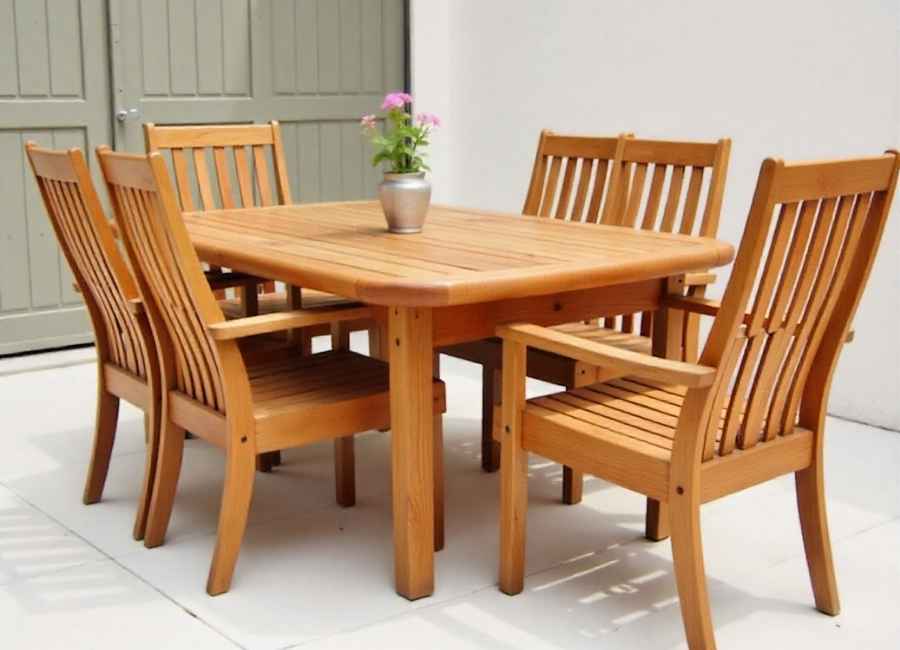
Start by examining your furniture thoroughly. Look for deep scratches, water stains, loose joints, and areas where the natural oils have completely dried out.
Teak naturally weathers to a silver-gray color when exposed to elements. This patina doesn’t indicate damage—it’s actually a protective layer. (Teak Care Information, n.d.) However, if you notice cracking, splitting, or black spots from mold and mildew, your furniture needs attention.
Check the structural integrity by gently testing joints and connections. Wobbly legs or loose screws should be addressed during the restoration process. Take photos from multiple angles to document the current state and help you track progress.
Essential Tools and Materials
Gather these supplies before beginning your restoration project:
Cleaning supplies:
- Soft-bristled brush
- Microfiber cloths
- Teak cleaner or mild soap
- Garden hose or pressure washer
Sanding materials:
- 120-grit sandpaper
- 220-grit sandpaper
- Sanding blocks or an orbital sander
- Dust mask and safety glasses
Finishing products:
- Teak oil or sealer
- Natural bristle brush
- Clean rags for application
Repair materials:
- Wood glue
- Clamps
- Replacement hardware if needed
Step-by-Step Restoration Process
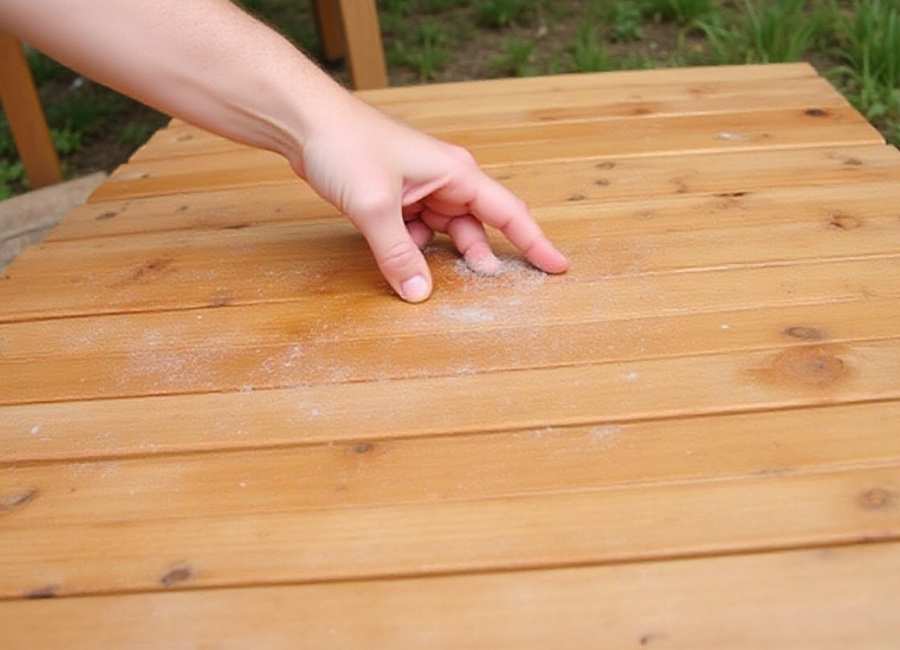
Clean the Surface Thoroughly
Remove all dirt, grime, and mildew from your teak furniture. Use a specialized teak cleaner according to the manufacturer’s instructions, or create a mild soap solution with warm water.
Scrub gently with a soft brush, working in the direction of the wood grain. Rinse thoroughly with clean water and allow the piece to dry completely for 24 to 48 hours before proceeding.
Sand to Remove Weathering and Stains
Begin with 120-grit sandpaper to remove the weathered surface layer and any stubborn stains. Sand with the grain, not against it, to avoid scratches.
Focus extra attention on heavily stained areas, but work gradually. Teak is dense, so aggressive sanding can create uneven surfaces that are difficult to correct. (How To Sand Teak Wood?, 2025)
Switch to 220-grit sandpaper for the final sanding pass. This finer grit creates a smooth surface that will accept oil or stain evenly.
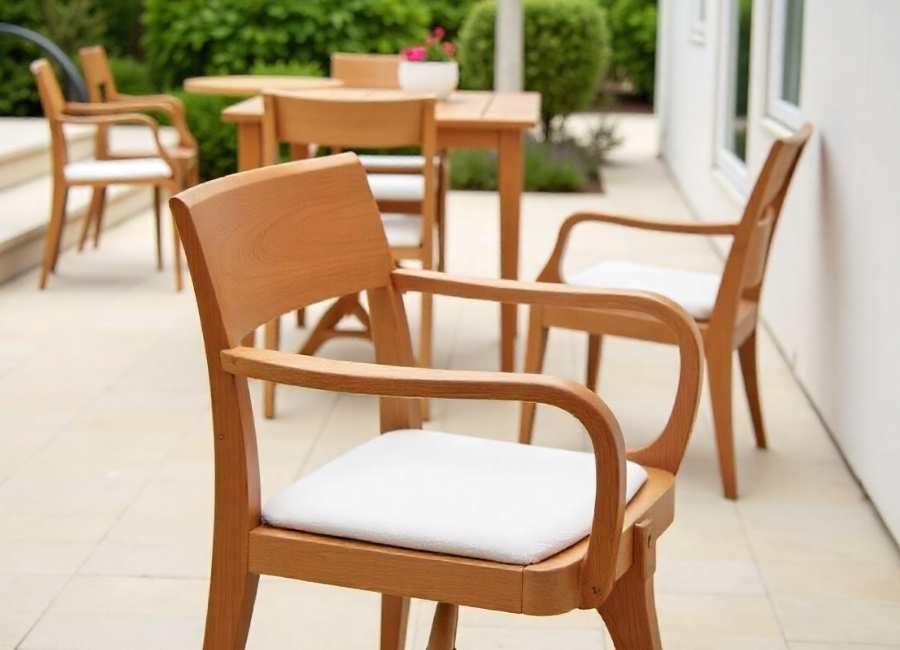
Address Structural Repairs
Tighten loose screws and bolts with appropriate tools. If the joints have separated, apply wood glue and clamp the pieces together until the adhesive has completely cured.
Replace any damaged hardware with stainless steel or brass alternatives that won’t rust or corrode over time. (Modern Teak Dining Chairs – Bond Dining Armchair, n.d.)
Apply Your Chosen Finish
Teak oil enhances the natural golden color and provides protection against moisture and UV damage. (Bare Decor Premium Golden Teak Oil for Home and Marine Use, 16oz, n.d.) Apply thin, even coats with a natural bristle brush, working in the direction of the grain.
Allow each coat to penetrate for 15-20 minutes, then wipe away excess oil with a clean cloth. Multiple thin coats produce better results than one heavy application.
For outdoor furniture, consider a teak sealer that provides additional UV protection. (Teak Sealer & Protector, n.d.) Indoor pieces may only need oil to restore their natural luster.
Maintenance Tips for Long-lasting Results
Clean your restored teak furniture regularly with mild soap and water. Avoid using harsh chemicals or pressure washers, as they can damage the finish.
Reapply teak oil annually for outdoor pieces, or every 2-3 years for indoor furniture. (Frequently Asked Questions | Teak & Deck Professionals, n.d.) This schedule maintains protection and keeps the wood looking fresh.
Store outdoor furniture during harsh winter months when possible. If storage isn’t available, use breathable furniture covers that allow air circulation while protecting from moisture.
When to Call a Professional
Some restoration projects exceed DIY capabilities. Contact a furniture restoration specialist if your piece has:
- Extensive structural damage requiring woodworking skills
- Veneer that’s lifting or damaged
- Intricate carvings or details you’re uncomfortable working around.
- Significant value that makes professional restoration worthwhile
Transform Your Teak Furniture Today
Restoring teak furniture combines practical skills with rewarding results. Your investment in time and materials will significantly extend the life of your furniture, maintaining its value and beauty for decades.
Start with a single piece to build confidence and refine your technique. The satisfaction of bringing weathered teak back to its golden glory makes every step worthwhile.
Begin your restoration project this weekend. Your restored teak furniture will provide years of enjoyment and serve as a testament to quality craftsmanship that stands the test of time.







